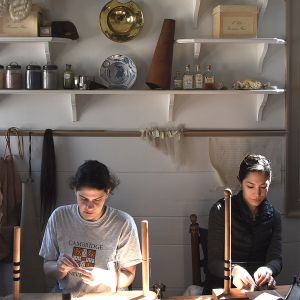The Winterthur Program offers a Master’s Degree, providing interdisciplinary study of diverse ideas, contexts, and theories—supported by truly unparalleled hands-on study of objects, landscapes, buildings, decorative arts, and design, both within and outside the vast collections of the Winterthur Museum, Garden & Library—so that all of our students may acquire the skills necessary to expand and confound predominant scholarship in material culture.
WINTERTHUR FELLOWS EXPERIENCE
INTERDISCIPLINARY LEARNING
INTERDISCIPLINARY LEARNING
Students engage
in both coursework
and field study
in all public humanities.
HANDS-ON STUDY
HANDS-ON STUDY
Students have access to renowned
public & private collections,
university and special collection libraries,
scientific laboratories, and multimedia design studios.
FACULTY MENTORING
FACULTY MENTORING
Students build
life-long relationships
with distinguished museum
and university thought leaders.
PUBLIC SCHOLARSHIP
PUBLIC SCHOLARSHIP
Students contribute to
ground-breaking scholarship
in public humanities
and material culture study.
PROFESSIONAL DEVELOPMENT
PROFESSIONAL DEVELOPMENT
Students are exceptionally prepared
for careers in academic teaching,
art and antiques markets, consulting,
historic sites, museums, and preservation.
FROM THE DIRECTOR
Welcome to the Winterthur Program in American Material Culture.
Focused on the material world of America in historical and global contexts, the Winterthur Program addresses the complicated lives of objects, the way in which objects fostered human relationships, and how objects ranging from the seventeenth century to the modern era enable us to understand the past in all of its diversity.
Students come from across the country and also from abroad, with diverse backgrounds reflected by a broad range of undergraduate majors. Our faculty are leaders and scholars in the various fields of curating and museum studies, art history, history, literary studies, anthropology, and archaeology. At both Winterthur and the University, field study and visiting researchers and professionals connect our students with faculty and colleagues around the world.
The Program’s founding values in 1952—disciplined looking, analytical reasoning, careful recording, and even scientific testing—continue to shape the Program today. All Winterthur Program students have the rare privilege of handling objects in the Museum collection, encouraging our students to personally engage with a wide range of materials from many different time periods and regions.
Students select the Winterthur Program for its small size, cohort model, unparalleled level of mentoring, experiential learning, and its commitment to fully funding all students, which have prepared them for exceptional careers.
Martin Brückner
Director, Winterthur Program in American Material Culture
SOUTHERN US
In June, second-year Fellows spend a week experiencing southern decorative arts, material culture, & ethnic communities.
South Union Shaker Village
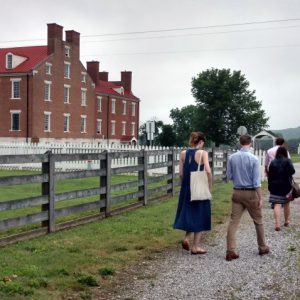
NORTHERN US
In August, second-year Fellows spend a week experiencing four centuries of social, cultural, environmental, and political material culture.
Peabody Essex Museum
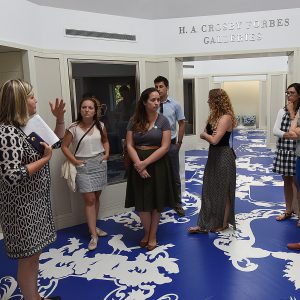
Unparallelled Hands-On Learning Beyond the Classroom
UNITED KINGDOM
In January, first-year fellows spend two weeks in London & surrounding areas, experiencing British design influence on American decorative arts.
The Crescent
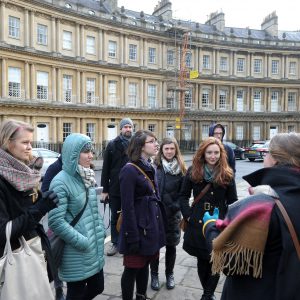
US URBAN CENTERS
In January, second-year fellows spend one week in NYC, experiencing urban landscapes & material culture, with a focus on Americana, auction houses, & antiques.
Hispanic Society
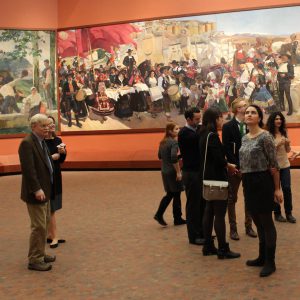
BEING A FELLOW and LIVING IN NORTHERN DELAWARE
100%
of enrolled M.A. students receive full funding—a generous annual stipend for living expenses and free tuition—for their entire 22-month course of study.
98%
of graduates from our program were employed or pursuing a PhD within 4 months of graduation.
80%
or more of current Fellows typically live within a 15-minute commute of renowned museums and cultural sites including Longwood Gardens, Brandywine River Museum of Art, Hagley Museum & Library, Mt. Cuba Center, Nemours Estate, Read House & Gardens, and of course Winterthur Museum, Garden & Library. The balance choose to live within a 15-minute commute of all major Philadelphia museums, archives, libraries, cultural sites, urban parks & gardens.




